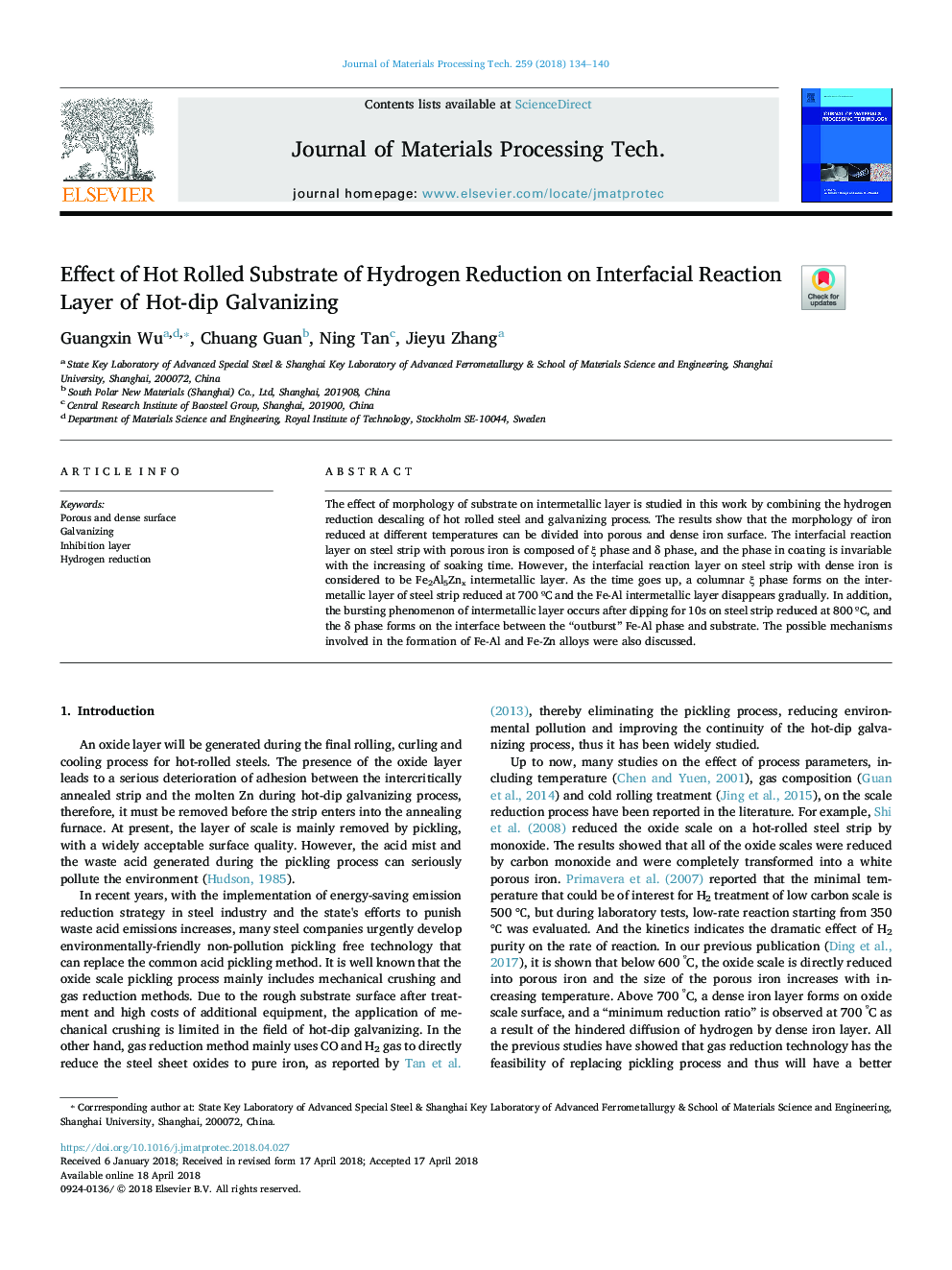| Article ID | Journal | Published Year | Pages | File Type |
|---|---|---|---|---|
| 7176286 | Journal of Materials Processing Technology | 2018 | 7 Pages |
Abstract
The effect of morphology of substrate on intermetallic layer is studied in this work by combining the hydrogen reduction descaling of hot rolled steel and galvanizing process. The results show that the morphology of iron reduced at different temperatures can be divided into porous and dense iron surface. The interfacial reaction layer on steel strip with porous iron is composed of ξ phase and δ phase, and the phase in coating is invariable with the increasing of soaking time. However, the interfacial reaction layer on steel strip with dense iron is considered to be Fe2Al5Znx intermetallic layer. As the time goes up, a columnar ξ phase forms on the intermetallic layer of steel strip reduced at 700 ºC and the Fe-Al intermetallic layer disappears gradually. In addition, the bursting phenomenon of intermetallic layer occurs after dipping for 10s on steel strip reduced at 800 ºC, and the δ phase forms on the interface between the “outburst” Fe-Al phase and substrate. The possible mechanisms involved in the formation of Fe-Al and Fe-Zn alloys were also discussed.
Related Topics
Physical Sciences and Engineering
Engineering
Industrial and Manufacturing Engineering
Authors
Guangxin Wu, Chuang Guan, Ning Tan, Jieyu Zhang,
